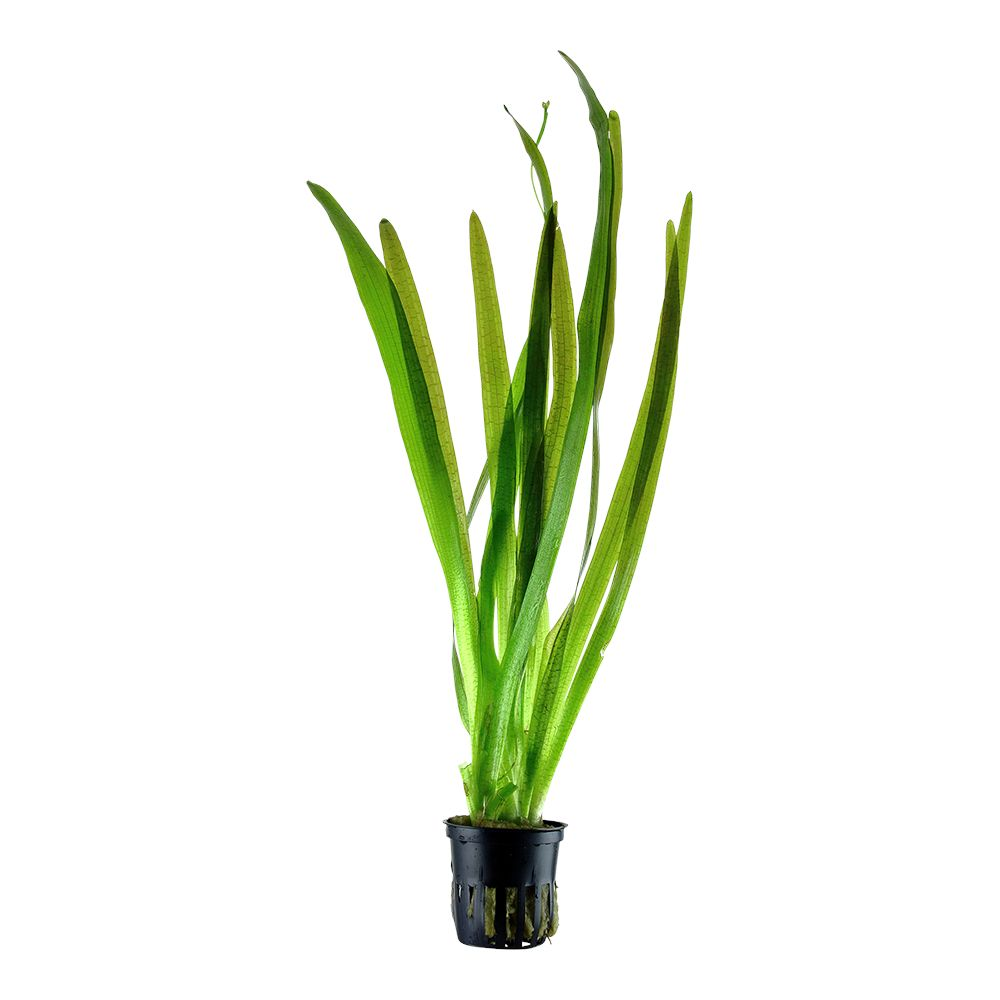Vallisneria spiralis
var. Tiger

Scientific Classification
Quick Stats
Aquarium Building Information
About This Species
Basic Description
Vallisneria spiralis, commonly known as Tape Grass or Eelgrass, is one of the best plants for anyone starting an aquarium. Its care level is exceptionally low, making it a very forgiving choice for beginners. You don't need special high-tech lighting or a CO2 injection system for it to flourish; it grows well even in basic aquarium setups. This plant is a fantastic background filler. Its long, ribbon-like leaves will grow tall, creating a beautiful, dense green curtain at the back of your tank that can hide filters and heaters. This provides a wonderfully natural look and offers shy fish a safe place to hide.
Beyond its looks, Tape Grass is a workhorse for maintaining a healthy aquarium. It's excellent at cleaning the water. It actively absorbs waste products produced by fish, which helps to prevent algae growth and keep the water clear. As it grows, it releases a lot of oxygen into the water, which is essential for the health of your fish and other tank inhabitants. It’s not picky about where its roots go, happily growing in sand, gravel, or a specialized aquatic soil. Simply plant it in the substrate and it will quickly start sending out 'runners' to create new plants, filling out the space with lush greenery.
Detailed Description
Vallisneria spiralis is a classic and resilient species in the aquarium hobby, valued for its rapid growth and adaptability. As a member of the extensive Vallisneria genus, it propagates primarily through vegetative means by sending out stolons, or 'runners,' across the substrate. These runners will sprout new plantlets, leading to the formation of a dense, meadow-like stand. This growth can be managed by trimming the runners to control its spread or by allowing it to naturalize in the background. When planting, it is crucial not to bury the crown (the white-ish base where the leaves emerge) too deep into the substrate, as this can cause the plant to rot and melt. The roots should be secure, but the crown must remain visible.
This species is a heavy root feeder and greatly benefits from a nutrient-rich substrate or the regular addition of root-tab fertilizers. While it can absorb nutrients from the water column, targeting the root zone promotes more robust and faster growth. It is remarkably undemanding regarding lighting and CO2, thriving in low-light, non-CO2 injected aquariums. However, under higher intensity lighting, its growth rate will increase, and the leaves may develop reddish or bronze hues. Its preference for medium water flow helps keep the long leaves clean of detritus and facilitates nutrient absorption. Hobbyists should be cautious when using certain 'liquid carbon' products (like glutaraldehyde), as Vallisneria species are notoriously sensitive to them and can experience a rapid 'melt' where the leaves disintegrate. Due to its wide native range, it is tolerant of a broad spectrum of water parameters, but it performs best in neutral to alkaline water with moderate hardness, making it perfectly suited to the typical tap water of many municipalities without the need for chemical alteration. Its high nutrient uptake rate makes it an exceptional tool for nitrate reduction, competing directly with algae and contributing significantly to a balanced ecosystem.
Scientific Description
Vallisneria spiralis is a submerged, dioecious perennial macrophyte belonging to the family Hydrocharitaceae. The specific epithet 'spiralis' is often a source of taxonomic confusion, as it does not refer to the morphology of its linear, tape-like leaves (which are typically straight), but rather to the tightly coiled peduncle of the female flower. This structure allows the flower to reach the water's surface for pollination and then retracts post-fertilization to allow the fruit to develop underwater. Sexual reproduction is a fascinating process of surface pollination (ephydrophily). The minute male flowers detach from a submerged spathe, float to the surface, and are drawn into the menisci formed by the larger, sessile female flowers. In aquaria, however, reproduction is almost exclusively vegetative via the production of stolons, demonstrating its high phenotypic plasticity and clonal growth strategy.
Physiologically, V. spiralis is highly efficient in nutrient sequestration, particularly of nitrogenous compounds (NH₄⁺, NO₃⁻) and phosphates, making it a valuable species for phytoremediation in eutrophic aquatic systems. Its ability to thrive without supplemental CO₂ can be attributed to its capacity to utilize bicarbonate (HCO₃⁻) as an inorganic carbon source, a common trait in hard, alkaline waters. This physiological adaptation allows it to outcompete many other plant species in CO₂-limited environments. Its broad tolerance for temperature and water chemistry is reflective of its vast cosmopolitan distribution across Europe, Africa, and Asia. This wide distribution and adaptability are factors in its IUCN Red List status of 'Least Concern' (LC). However, this same resilience contributes to its potential as an invasive species in non-native regions where it can form dense monotypic stands, altering local hydrology and displacing native flora. While a freshwater species, its tolerance for salinity up to 0.5 ppt allows it to inhabit oligohaline zones of estuaries and deltas.
Related Images

Tiger
Generate Printable Card
Create a printable card for this creature to display in your store or aquarium. The card includes a QR code for quick access to more information.
